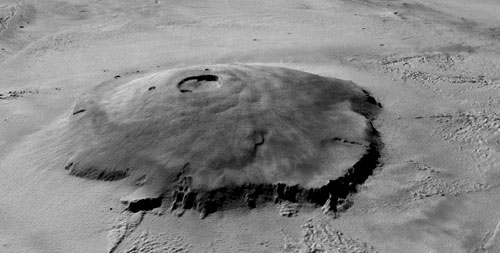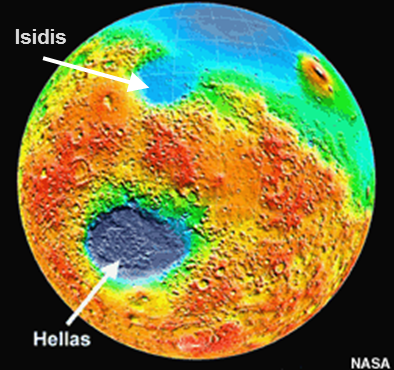 |
||||
|
Topography of Mars The first striking feature in the Martian topography is the asymmetry between the Northern and the Southern hemispheres. The southern hemisphere is much more elevated. These southern highlands, often called "Terra" (Aonia, Cimmera, Noachis, Sirenum, ...), cover about two thirds of the planet and count more impact craters than the North.
The northern hemisphere is mainly made of vast plains at low altitudes below level zero and are called "Planitia" (Acidalia, Amazonis, Arcadia, Utopia, ...). These lowlands cover about one third of the planet and present few impact craters due to the accumulation of lava flows that flattened their relief surfaces. The reason of this North-South dichotomy is still unknown but an hypothesis seems priviledged: the occurrence of one or multiple impacts with giant external bodies in the early history of Mars.
Mars possesses the highest volcanoes of the Solar System. The biggest ones are shield volcanoes in Elysium and Tharsis regions. Tharsis is in fact a vast volcanic bulge of 7-10 km height in average that was built by innumerable generations of lava flows. The highest volcano is Olympus Mons which reaches an altitude of 20 km and is located just to the West of Tharsis.
The biggest canyon of the Solar System, Valles Marineris, is also found on Mars. It lies to the East of Tharsis and its dimensions reaches 3500 km long, 300 km wide and 7 km deep.
Three large and deep basins are found on the highlands, Argyre, Hellas and Isidis. They were formed by impact with big asteroids. The largest and deepest basin is Hellas Planitia with a diameter of 2200 km and a depth going down 7 km below the zero altitude level.
|
|||



